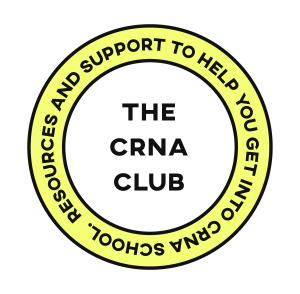CRNA school is extremely competitive. There are many applicants each cycle, and your resume gets seconds before either going in the “no” or “yes” pile. Having a resume that catches the attention of the admissions committee is one of your first steps to securing an interview and getting into an anesthesia program. Having a resume that showcases your skills as an ICU nurse and experience, as well as your academic ability is key. Let’s discuss 5 resume tips that will help you get your application put on the top of the pile, so you can get into CRNA school.
By the way, are you curious how competitive of a CRNA school applicant you are?
Tip 1: Include a section that says, “Anesthesia-related”
Given that CRNA programs are extremely competitive, you are going to want to show the admissions committee that you have a strong interest in the anesthesia profession. On your resume be sure to include a section that speaks to your anesthesia experience, this can be titled, “Anesthesia-Related Experience” or something to that effect. Here you will include the number of hours that you have shadowed a CRNA. This is also a great place to include any anesthesia related projects or initiatives you have done. For example, if you do a presentation for your colleagues discussing considerations for the care of a post-anesthesia cardiac surgical patient, or create a handout on the signs and symptoms of residual neuromuscular blockade for new nurses, you can include that here.
Tip 2: Put important information on the first page
It should go without saying that the first page of your resume is prime real estate. This is where you want to showcase your most honorable achievements. If you received any special awards (like the Daisy award, or really did something that you are proud of and want to stand out, the first page is where you put it. Traditionally, resumes follow a fairly set algorithm, however if there is something outstanding that you do not want the admissions committee to miss don't be afraid to move it to this front page.
Remember, keep your CV or resume to 2 pages MAX
Tip 3: Don’t include too many soft/generic skills
If you have worked in several ICUs do not repeat the same exact phrases or skills underneath each work experience. If you have skills that fit under several of your job experiences, put it at the top under “General Skills.” For example, if you titrated vasoactive drips or are experienced with CRRT, do not repeat that over and over again. You are using up precious real estate repeating yourself. Instead, consider:
General skills
- Titrating vasoactive medications
- Hemodynamic monitoring
- Swan-Ganz and central line management
Tip 4: Use a font that’s easy to read
Do not include fonts that are cursive or hard to read. You also don't want the font to be too small keep the font size at 10 to 12 pts. Use at least one inch margins and remember, don't go past two pages. Here are some fonts we recommend:
- Arial
- Times New Roman
- Georgia (slightly wider than TNR)
- Helvetica
- Tahoma (more narrow)
- Verdana
How to keep it skimmable
We really recommend that your resume is in the horizontal format where you scam from left to right (also, do NOT include a photo). Traditionally, the linear resumes are easier to skim versus the columnar types. According to Pollastek and The Psychology of Reading, we skim in the shape of a letter “F” from left to right, top to bottom. That is why we recommended using the linear resume templates (vs the two column ones) because that is how our minds are used to reading.
Also, the more familiar the words are to your reader, the easier they are to skim and understand. So if you use words like “titrating” instead of “adjusting”, that is going to make it easier for your reader, and reduce the mental load.
Tip 5: Include white space
Don't try to pack so much information in your resume that it feels crowded and heavy. You want to have enough white space, so your reader doesn't feel overwhelmed as they are skimming your resume, otherwise they’ll put it down and move onto the next. You want all your years of hard work to get seen! Get creative with using bullet points, italics, and all caps (be careful with the all caps, though, don’t overdo it).
Your resume is an important part of your CRNA school application. You have a matter of seconds before your admissions faculty moves on to the next resume. Make sure you get a few people to review your resume and ask them what stands out the most to them when they are skimming it. For more strategy behind applying to CRNA school, and writing an effective CV or resume, be sure to watch our free masterclass, Applying to CRNA School 101.
Did you know we have Resume Templates available in The Shop? It's of our most popular time-saving tools and comes with over 50+ prompts and tips to help save you hours!


